The quality of poultry, fish and meat (Figure 1) are often described in terms of their toughness, springiness, firmness and tenderness. For quality personnel and food technologists to be able to evaluate the quality of meat, these attributes need to be expressed in terms of analytical information. Other food sectors introduce new products and flavors in order to win consumer acceptance, but when it comes to the meat sector, consumers often evaluate quality based on its sensory texture alone.
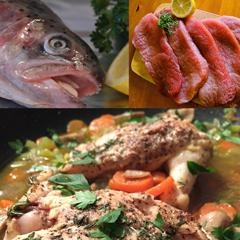
Figure 1. Tenderness, toughness, springiness, and firmness are all terms that are used to describe the quality of meat, poultry, and fish
Test Methods for the Meat and Fish Sector
Various forms of meat products require different texture measurement techniques. The different types of textures of meat are:
- Tough meat products like whole fish and steaks
- Soft protein-based gels, like surimi
- Paste like meat such as stocks, slurries, and potted meats
- Meat particulate products like minced meat and ground beef
The sensory quality factor achieved by recreating meat texture is important for making vegetarian alternatives of these products.
Bulk Analysis
The quality of minced meat, and other comminuted and freshly processed meat products can be accurately determined through bulk analysis. Such products are handled and consumed in bulk, and this analysis helps measure the toughest components and their bulk firmness.

Figure 2. Bulk analysis of meat
Bulk analysis is used to evaluate the gristle content in ground beef. It can be used for testing the toughness of minced meat before and after cooking. The consistency of reconstituted meat patties and sausages can be evaluated through bulk analysis, and chicken, turkey, beef, and veggie burgers can also be compared.
Compression
Textural properties such as stickiness, hardness, springiness, and fracturability can be assessed by squashing or compressing self-supported samples.
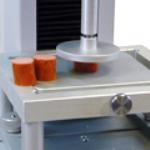
Figure 3. Compression testing
Hot dogs are sliced and then subjected to compression testing in order to evaluate the hardness to touch. Other attributes that can be evaluated are muscle firmness of whole fish, and hardness to touch of salami. The physical consistency of sausage can be tested to evaluate its slicing performance.
Extrusion (back extrusion)
The back extrusion technique (Figure 4) is used for assessing the consistency and body of liquids and meat pastes. This method can also be used for:
- Evaluating the spreading and yield properties of meat paste
- Assessing the adhesiveness and flow characteristics when meat slurries are spread or pumped
- Evaluating the cohesiveness and structure recovery after pumping
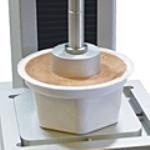
Figure 4. Back extrusion technique
Penetration and Puncture
The hardness of a meat sample or binding of muscle reflects its toughness and maturity, which is related to the force required for deformation. This force can be measured by performing puncture and penetration tests (Figure 5) that make use of balls, needles, small cylinders, and cones to penetrate into the sample, replicating the biting action in the mouth. Muscle firmness and elasticity can be compared between farmed and wild salmon.
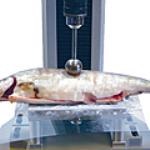
Figure 5. Meat and fish penetration
Multiple point penetration
Meat products that have varying textures at different sections, like reformed ham and burger patties, can be tested by multiple-point analysis (Figure 6). Other evaluations that can be made with this technique include the elasticity of processed meats and the gel firmness of fish jellies, meat and surimi.
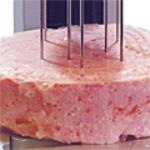
Figure 6. Meat and fish multiple point penetration
Shear
For performing heavy-duty shear testing, shear blades are used, while for low-force measurements, wire blades are used (Figure 7). The Warner Bratzler is used for evaluating the toughness and firmness of fibers and muscles. The hardness to bite of various types of hot dogs can be compared by shear testing.
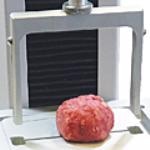
Figure 7. Meat and fish shear
The cutting force or the joint tenderness of burgers from different suppliers can be compared through shear testing. The Volodkevich fixture can be used for measuring the shearing bite resistance. Shear blades can be used for testing the hardness to bite and toughness of chicken breast fillets. The shear resistance and tenderness of uncooked minced meatballs can also be measured using this method.
Tension
Extensibility or pure tension methods can be used to evaluate the break strength of meat products.
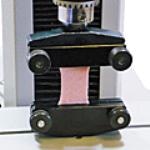
Figure 8. Meat and fish tension
The break strength of liver sausage can be evaluated based on the identification of the failure point during tension testing. This technique can also be used to evaluate the tear strength of thinly sliced meat.

This information has been sourced, reviewed and adapted from materials provided by Mecmesin.
For more information on this source, please visit Mecmesin.